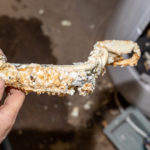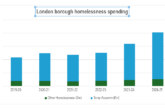Limescale often forms in the heating and hot water systems of domestic properties located in hard water areas — which can severely impact a boiler’s performance, efficiency and longevity. Installing a suitable and effective limescale prevention measure therefore makes sound financial and environmental sense for the social housing sector, says Richard Braid, Managing Director of Cistermiser.
Approximately 60% of homes in the UK are supplied with hard water — a result of rainwater (which is naturally soft) absorbing minerals such as calcium and magnesium carbonate when it flows over a chalk or limestone bedrock. The severity of water hardness depends on various factors, including regional rock types, with water tending to be hardest in the South-East and London, the Midlands and eastern Wales.
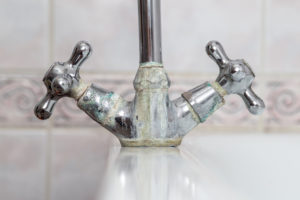
Hard water can cause minor issues (such as soap not lathering well), but a more considerable and frequently occurring problem is the formation of limescale. This chalky, off-white, hard substance develops when hard water is heated or left to stand, with the dissolved minerals solidifying as the moisture evaporates. Limescale can form on surfaces where water is heated (a four-person household can accumulate up to 70kg of limescale per year [1]) and it’s notoriously stubborn, making removal challenging.
Householders living in hard water areas will be familiar with rock-like limescale deposits forming in kettles and on taps and showers. As well as being unsightly, they reduce efficiency; kettles with a heating element coated in limescale will take longer to boil and taps and showers will have lower flow rates if limescale is obstructing their outlets or nozzles.
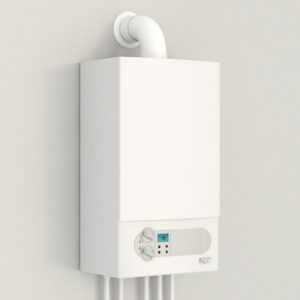 It is also highly likely that limescale will coat the internal surfaces of heating and hot water systems, including pipework and vital components such as heat exchangers. While this scale isn’t visible, it will nonetheless be making its presence known — by reducing the performance, efficiency and longevity of appliances.
It is also highly likely that limescale will coat the internal surfaces of heating and hot water systems, including pipework and vital components such as heat exchangers. While this scale isn’t visible, it will nonetheless be making its presence known — by reducing the performance, efficiency and longevity of appliances.
With a combi boiler, for example, limescale deposits inhibit heat transfer within the heat exchanger and reduce flow rates in pipes, forcing the boiler to work harder. This increases energy demand — and subsequently carbon emissions and energy costs. The impact shouldn’t be underestimated; just a 1.6mm coating of limescale on a heating element can cause a 12% loss in heating efficiency (2). Component damage and faults (resulting in costly repairs) are also likely, and complete boiler failure is even a possibility.
Tackling limescale
Guarding against limescale can therefore help social housing providers to reduce their capital expenditure and increase the energy efficiency of their housing stock in line with net zero targets. Much progress can be made by improving the efficiency of space and water heating, which consumes around 80% of the average UK household’s total annual energy consumption. It also helps control utility bills, providing much-welcome support for vulnerable tenants, which has become imperative given current energy prices and the cost-of-living crisis.
Limescale prevention solutions should already be standard practice when a new boiler is installed, with Part L of the Building Regulations stating that in areas with hard water (3) ‘suitable measures should be taken to treat the feed water to water heaters and the hot water circuit of combination boilers to reduce limescale accumulation’. However, it is also considered best practice to apply this to existing boilers — perhaps implementing measures in line with annual servicing.
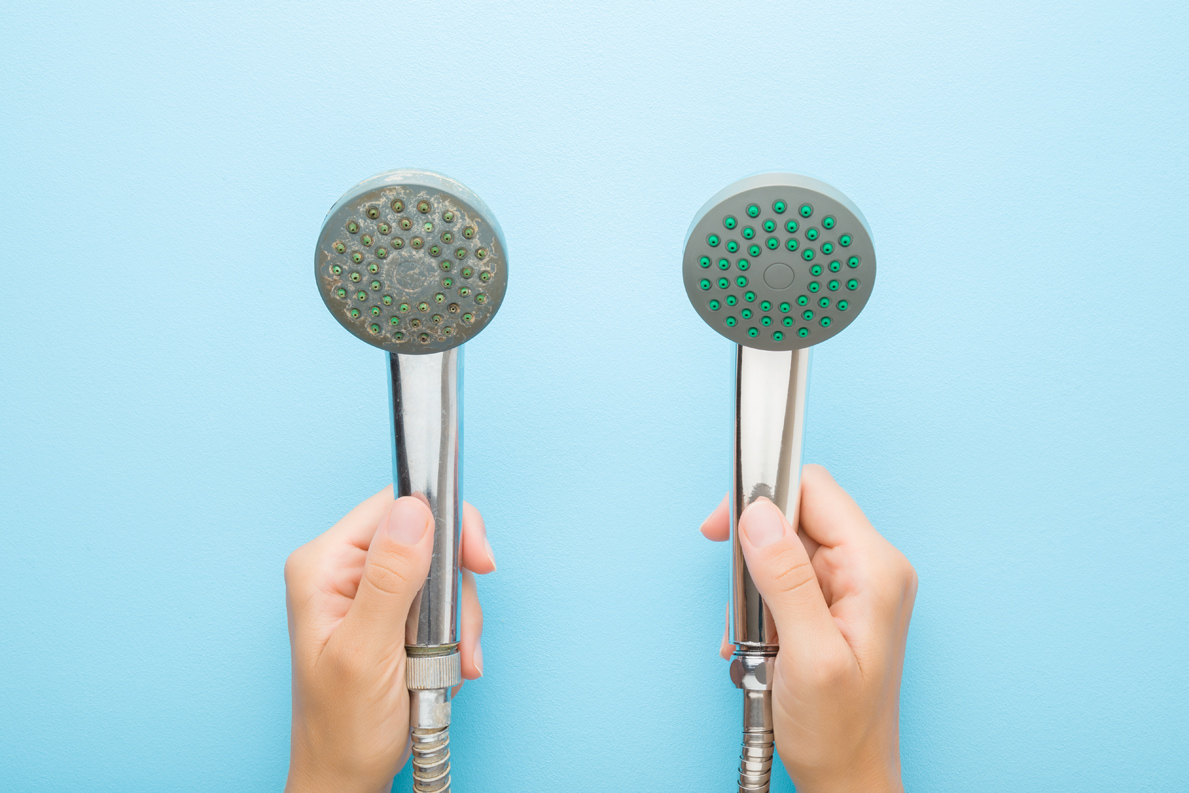
Solutions to the problem
A range of options are available — but before deciding which solution is most appropriate, it is essential to consider the merits of each one separately, as well as the maintenance required and how effective they will be in the long-term.
For example, water softeners — where an electrical device introduces salt into the mains water pipe where it enters a property to change the hardness of the water — have become an established method of reducing limescale. However, such devices are typically large, bulky and relatively expensive. They also usually need regenerating every month (with replacement salt typically supplied in heavy bags or solid blocks). Furthermore, the water will have a higher salt content, which is not recommended for people on a low sodium diet. Therefore, the cold kitchen tap usually needs to be connected to the unsoftened supply, or a third tap can be fitted.
In addition, soft water is aggressive to metals and can cause corrosion (a visible sign being brown tap water). Over time, pinholes can appear in pipework, resulting in leaking or burst pipes. Indeed, many leading boiler manufacturers do not recommend the use of salt-softened water in their appliances, so a separate non-softened supply will be required to fill the heating system.
Other limescale prevention devices rely on electronic, electrolytic or magnetic methods. For example, the electronic methods create electric fields, generated in coils of wire on the supply pipe — a process designed to alter the structure of the calcium to prevent build-up. However, such solutions have a relatively short range, meaning they can treat only a proportion of the water and potentially just in the short-term.
Chemical-based method
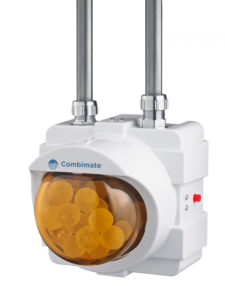 Phosphate dosing, on the other hand, is a chemical-based method that ensures all water is continually treated. With this well-established, popular solution, safely used throughout the world, phosphate, a natural nutrient commonly found in our food and drink and used within the human body to build healthy bones and teeth, is consistently introduced in microscopic quantities through a dispensing device.
Phosphate dosing, on the other hand, is a chemical-based method that ensures all water is continually treated. With this well-established, popular solution, safely used throughout the world, phosphate, a natural nutrient commonly found in our food and drink and used within the human body to build healthy bones and teeth, is consistently introduced in microscopic quantities through a dispensing device.
The hardness or softness of the water is not altered; instead, minerals in the water are kept in suspension (because they attract the phosphate), preventing them from adhering to hot surfaces and forming limescale deposits. The phosphate also forms a thin, non-residual protective coating on metal surfaces to further inhibit the accumulation of scale-causing minerals.
 Research has also demonstrated that polyphosphates can help to remove existing hard deposited scale. Combimate, our compact phosphate dispenser, simply requires an annual refill of Combiphos — a 100% food-grade, tasteless and odourless polyphosphate compound, safe for human consumption and approved by the Food and Agriculture Organization (FAO) and the World Health Organization (WHO). Combimate is very straightforward for a qualified plumber to install, and is also cost-effective. It can be configured to protect either an individual heating or hot water appliance or the complete water supply (hence also protecting other appliances affected by limescale, including kettles, taps, showers, washing machines and dishwashers).
Research has also demonstrated that polyphosphates can help to remove existing hard deposited scale. Combimate, our compact phosphate dispenser, simply requires an annual refill of Combiphos — a 100% food-grade, tasteless and odourless polyphosphate compound, safe for human consumption and approved by the Food and Agriculture Organization (FAO) and the World Health Organization (WHO). Combimate is very straightforward for a qualified plumber to install, and is also cost-effective. It can be configured to protect either an individual heating or hot water appliance or the complete water supply (hence also protecting other appliances affected by limescale, including kettles, taps, showers, washing machines and dishwashers).
Limescale damage can be successfully and cost-effectively avoided by correctly treating hard water and ensuring that maintenance is carried out as per manufacturers’ recommendations. This ensures that heating and hot water systems operate efficiently, ultimately reducing capital costs, controlling utility bills and minimising carbon emissions.
1. According to British Water
2 & 3. With a total water hardness of greater than 200 parts per million of calcium carbonate
Header image: A plumber inspecting a tubular electric heater covered with limescale


